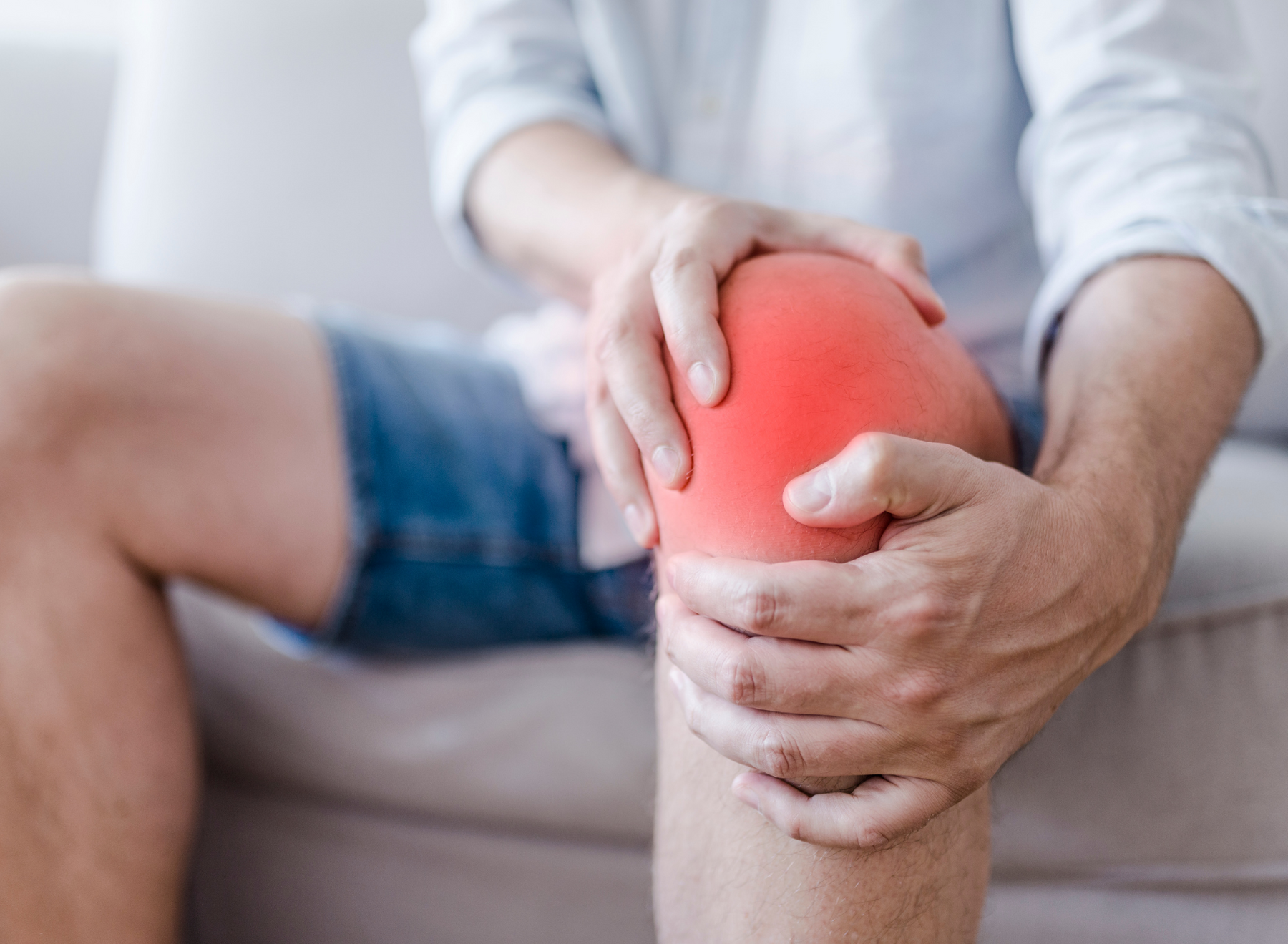Discussing Pain Management Options With Patients
Pharmacists can counsel on prescription and OTC options, as well as nonpharmacologic measures.

In the United States, there were over 67,000 drug overdose deaths in 2018.1 Of these, about 70% were due to opioids.1 According to the CDC, from 2006 to 2017, there was a greater than 19% decrease in annual opioid prescribing, suggesting that “health care providers have become more cautious in their opioid prescribing practices.” 2
As the most accessible health care providers, pharmacists are in a unique position to help patients find ways to treat pain without opioids.
As pharmacists, we may immediately start thinking about pharmaceuticals when a patient asks for a recommendation. However, pharmacists can counsel on both OTC and prescription medications, as well as other nonpharmacologic measures. When appropriate, encourage the patient to see a specialist to discuss nonopioid alternatives such as massage, physical therapy, acupuncture, injections, or nerve blocks, or even surgery.
When recommending medication for an adult aged 65 or older, it is prudent to check the Beers List to ensure the medication is safe and appropriate.3 Checking a drug interaction database is also prudent in ensuring safety at any age.
In terms of nonopioid medication for pain relief, acetaminophen or a nonsteroidal anti-inflammatory drug (NSAID) is a good starting point.
Acetaminophen: Acetaminophen can help patients with mild to moderate pain. Counsel patients on maximum dosage, avoiding alcohol, and liver toxicity. Caution against combining products that contain acetaminophen, such as cough and cold products.
NSAIDs: NSAIDs are available in many OTC and prescription products and can help patients with mild to moderate pain and inflammation from various conditions. Those with gastrointestinal (GI) concerns may fare better with prescription celecoxib, a COX-2 inhibitor, which has fewer GI adverse effects (AEs). Patient counseling can include the risk of GI bleeds, perforation, and ulcers; hypertension; kidney problems; and cardiac thrombotic events.4
Anticonvulsants: Medications such as gabapentin and pregabalin are often prescribed for nerve pain. Counsel patients on the risk of sedation, the possibility of suicidal thoughts and behavior, and the risk of misuse.4
Antidepressants: Patient counseling on antidepressants should always include the risk of suicidal thoughts and behavior. In addition to reviewing the drug’s AEs with the patient, it is prudent to mention withdrawal symptoms due to abrupt discontinuation, and the importance of a tapering schedule when the drug will eventually be discontinued.4
Also, reviewing serotonin syndrome and drugs that can interact with antidepressants (eg, triptans, opioids, muscle relaxants, St. John’s Wort, and dextromethorphan) can help prevent a life-threatening serotonin buildup.4
- Tricyclic antidepressants (TCAs): TCAs can be useful in chronic pain and nerve pain. In addition to the counseling points above, pharmacists can also counsel patients on the anticholinergic AEs: dry mouth, dizziness, sedation, memory problems, orthostatic hypotension, urinary retention, and cardiac conduction abnormalities.4
- Serotonin-norepinephrine reuptake inhibitors (SNRIs): SNRIs such as duloxetine or venlafaxine can help various pain conditions, like nerve pain or fibromyalgia, and have fewer side effects than TCAs.4
- Selective serotonin reuptake inhibitors (SSRIs): SSRIs such as fluoxetine or escitalopram are effective as antidepressants but have less of an effect on pain relief than other classes of antidepressants.4
Other categories of drugs, such as muscle relaxants or benzodiazepines, are sometimes used for muscle pain and spasms. In these patients, counseling on AEs and drug interactions is essential, as well as the importance of short-term use.
Several community pharmacists shared their experiences in talking to patients about pain relief. Trisha Winroth, PharmD, pharmacy manager at Walgreens in Lowell, Massachusetts, has plenty of recommendations she shares with her patients. “In community pharmacy, there aren’t many things that top the satisfaction of helping a patient in pain. Pain can and does affect a patient’s life in every way, from productivity to personal relationships, from sleep to work capacity. Helping a patient resolve pain will ensure you a trusted patient-pharmacist relationship forever,” she explained.
Winroth finds it helpful to offer solutions that she has personally tried, which adds more trust to the recommendation. Winroth noted that chronic pain patients “often dislike pharmacies and pharmacists because we've been put in the position to police narcotics and pain medications for years. Through corresponding responsibility, good faith dispensing, and a plethora of lawsuits and board of pharmacy cases, pharmacists must act judiciously to ensure prescriptions meet a number of requirements that often remove of us from a true patient care role.”
She reminds pharmacists to remember that caring for patients is of utmost importance. “Spending a few minutes listening and offering suggestions can be the difference between true patient care and merely a dispensing gatekeeper role,” Winroth said.
Some of the go-to products she recommends include:
- ice packs, eye masks, and MigreLief supplements for headache and migraine,
- KT Tape for plantar fasciitis, and
- lidocaine patches (remind patients to remove for 12 hours) or roll-on for sciatica or back pain.
Anne Henriksen, PharmD, is the pharmacist and owner of Malley’s Compounding Pharmacy in Richland, Washington. For nerve pain, Henriksen recommends a supplement that contains the methylated and active forms of B vitamins. She noted that “since opiates do not work for nerve pain, patients with nerve pain are typically very willing to try alternatives to alleviate their pain,” and this product helps a great deal with nerve pain. “Our pharmacists often recommend this supplement even before a prescription medication is started,” she said, noting that a local neurologist puts all of his patients on the supplement before starting any prescription medication for nerve pain.
Henriksen finds that many of her patients who take opioids are eager to learn more about OTC options for pain management. “As a compounding pharmacist, I often recommend low-dose naltrexone (LDN) for pain,” Henriksen said. “Naltrexone works with the body's inflammatory system to reduce pain levels. There is a growing body of evidence to support the use of LDN in pain and other disease states, and a conversation about LDN is worth having with any chronic pain patient.” Henriksen also recommends that her patients try cannabidiol (CBD) products, especially topicals with menthol, that “provide the familiar cooling relief of menthol but has the added healing and anti-inflammatory benefits of the CBD and herbs.”
Elaine Richer, RPh and CEO of MyCureAll, has 25 years of community pharmacy experience and now focuses her practice on CBD and medical cannabis. “Because cannabinoid receptors, unlike opioid receptors, are not located in the brainstem areas controlling respiration, lethal overdoses from cannabis and cannabinoids do not occur,” she explained. Richer noted that medical cannabis is becoming a popular alternative for patients who do not want to take opioids or cannot tolerate them. Richer advises talking to patients about CBD or medical cannabis. “Studies show that medical cannabis is effective for pain. In combination with opioids, medical cannabis can enhance pain relief and lower the incidence of side effects and overdoses from opioids. Patients are often able to lower opioid doses or taper to discontinuation.” She indicated that CBD or cannabis can help the patient reduce opioid use without the risk of overdose and relapse, providing a safe alternative treatment for pain and other conditions.
With many treatment options, pharmacists can be a valuable resource to patients who require pain relief. By listening, understanding, and counseling, pharmacists can make a meaningful difference.
References
- CDC. Drug Overdose Deaths. Last updated March 19, 2019. Accessed February 11, 2021.https://www.cdc.gov/drugoverdose/data/statedeaths.html
- CDC. Changes in Opioid Prescribing Practices. Last updated August 13, 2019. Accessed February 11, 2021. https://www.cdc.gov/drugoverdose/data/prescribing/prescribing-practices.html
- American Geriatrics Society. American Geriatrics Society 2015 Updated Beers Criteria for Potentially Inappropriate medication use in older adults. Last updated November 2015. Accessed February 11, 2021. https://www.guidelinecentral.com/summaries/american-geriatrics-society-2015-updated-beers-criteria-for-potentially-inappropriate-medication-use-in-older-adults/
- US Department of Health and Human Services. Pain Management Best Practices Inter-Agency Task Force Report. Last updated May 9, 2019. Accessed February 11, 2021. https://painmed.org/wp-content/uploads/2021/01/pmtf-final-report-2019-05-23.pdf.
